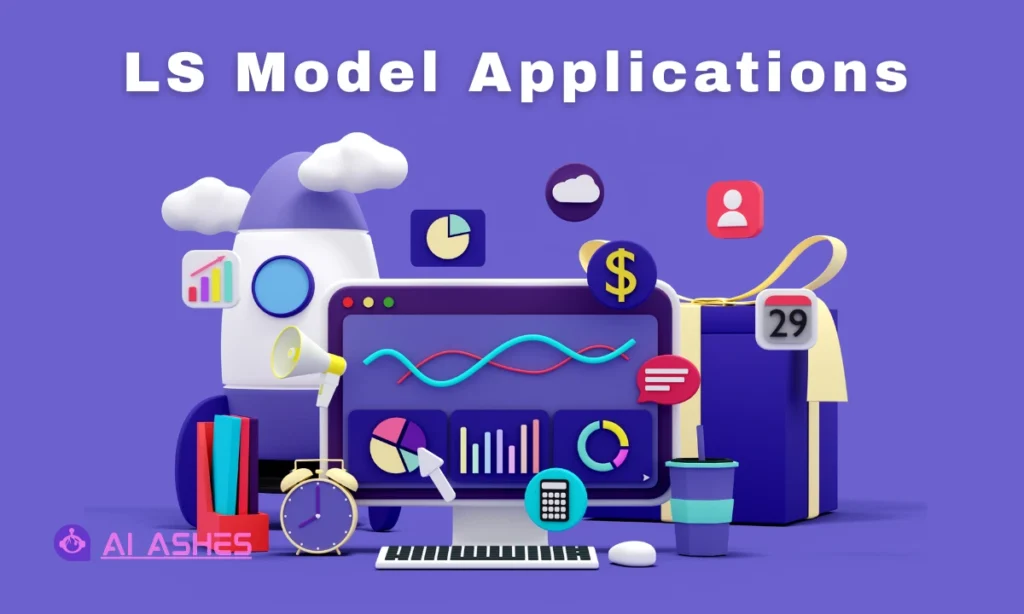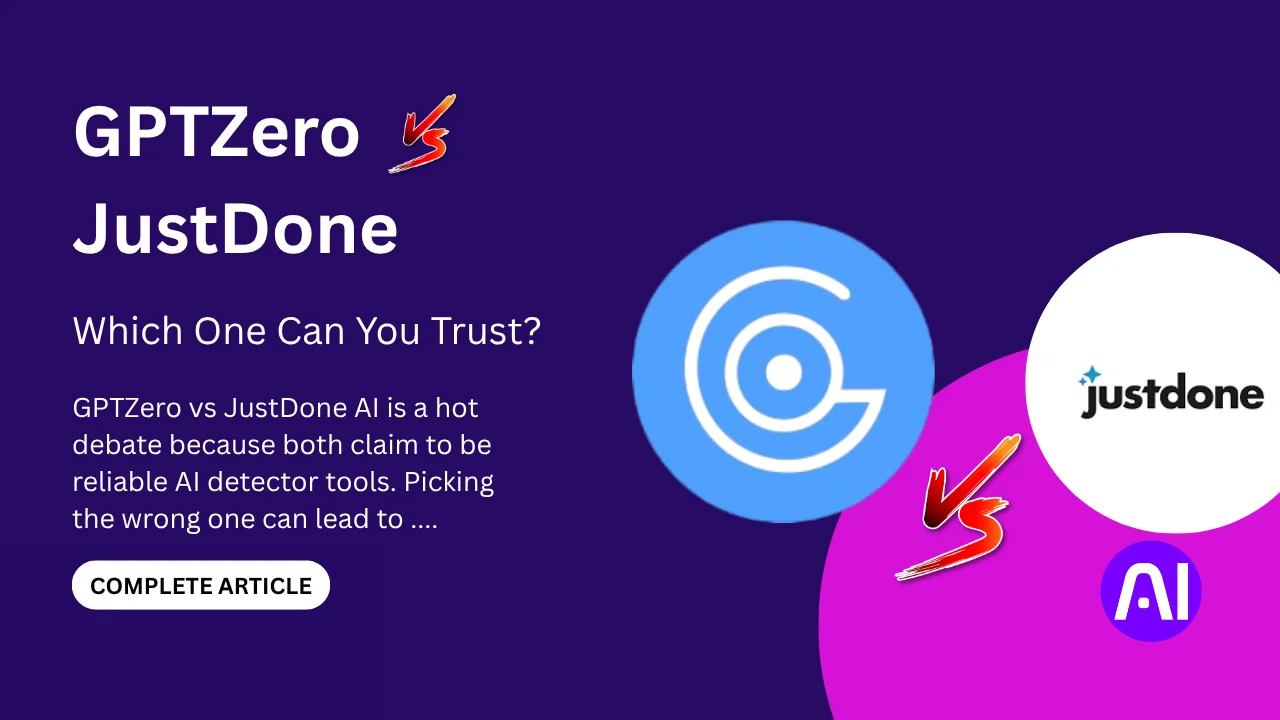The rise of LS models is changing how we search and understand information online. These models, also known as latent semantic models, help computers make sense of language in a smarter way. They go beyond matching keywords and look at meaning, which is what makes them powerful today.
If you have ever wondered how semantic search works or why NLP tools feel more accurate now, LS models are the reason. They are used to find deeper connections between words, topics, and intent. This helps search engines show better results and improves voice assistants, chatbots, and more.
In this article, you will learn how LS models work, where they are used, and why they are a key part of modern natural language processing. You will also discover how they support better search experiences, smarter content tools, and real business results. Whether you are a tech learner or just curious about how AI understands language, this guide will help you understand how latent semantic models quietly shape your online experience every day.
What Exactly Are LS Models?

LS models (also called l.s. models) stand for latent semantic models. These models help machines understand the meaning behind words. They are used in tools like search engines, chatbots, and translation apps. Instead of just matching exact words, LS models look at the meaning of words in context.
What is Latent Semantic Analysis?
Latent Semantic Analysis (LSA) is one type of LS model. It was first used to study the relationship between words and documents. LSA finds patterns by looking at which words appear together in texts. According to Wikipedia, LSA helps reduce noise in language data. It allows computers to understand meaning even when the exact words are not used.
What is a Term-Document Matrix?
To start, LS models build something called a term-document matrix. This is like a big table. It shows which words appear in which documents. Each row is a word and each column is a document. The matrix shows how often each word appears.
But this matrix is often huge and full of noise. So we use a method called Singular Value Decomposition or SVD to make it better.
What is Singular Value Decomposition?
SVD is a math trick. It breaks the matrix into smaller pieces. This helps the computer find patterns in the data. It removes words that are not useful and focuses on the ones that matter. With SVD, latent semantic models can find links between words that do not look the same but mean the same.
How Do LS Models Work?
Once the data is cleaned, the model places words and documents into a vector space. This is like putting them on a map. Words with similar meanings are close together. This helps machines understand that “doctor” and “physician” are related, even if they are not the same word.
So, when you search online, l.s. models help the system guess what you really mean. They power better semantic search and smarter NLP. That is why LS models are so useful in today’s AI world.
Understanding LS Models in Natural Language Processing
Understanding LS models in natural language processing is key to knowing how machines read and respond to text. These models help break down human language into numbers. Then they use those numbers to find meaning.
How LS Models Process Text
It all starts with raw text. First, the text is cleaned. This step removes symbols, stop words like “the” and “and”, and turns everything into lowercase. After that, the system turns the words into numbers using a method called vectorization.
The words and documents are placed into a term-document matrix. This matrix shows how many times a word appears in each document. But this matrix is often too large. So, the model uses singular value decomposition or SVD to make the data smaller and more useful.
With SVD, the model keeps the key patterns and removes the noise. This allows the system to understand hidden relationships between words. For example, the words “teacher” and “instructor” may appear in different places but mean the same. LS models find that link.
Role of LS Models in NLP Pipelines
Once the model has cleaned and shaped the data, it becomes part of the NLP pipeline. This pipeline helps machines do things like answer questions, sort documents, or group similar texts. Some common steps include:
- Tokenization: Breaking text into smaller parts like words or sentences
- Vectorization: Turning text into numbers
- Semantic representation: Mapping meaning in a vector space
- Clustering or classification: Grouping or tagging based on meaning
L.s. models are most useful during the semantic representation stage. They allow NLP tools to see the deeper meaning behind words. This helps tools like chatbots or search engines work better.
Real Uses: Topic Modeling and Document Clustering
Two key tasks where latent semantic models shine are topic modeling and document clustering.
- Topic modeling helps systems find main themes in large sets of documents.
- Document clustering groups similar texts together even if they use different words.
These tasks help companies sort customer reviews, support tickets, and articles. They also power tools like Google News and smart email filters.
Why This Matters Today
As AI grows, we need smarter ways to understand language. Simple keyword searches are not enough. People use many words to mean the same thing. That is why semantic representation matters.
With LS models, machines can finally “get” what we mean, not just what we type. This makes AI more helpful, human, and easy to use. Understanding how LS models work in natural language processing shows why they are now at the heart of smart apps and tools.
Core Applications: LS Model Applications in Semantic Search

LS models help many systems understand what people really mean. These semantic analysis models are now used across many fields. They improve search results, sort data, and support decision-making. Their impact is wide and growing.
Web Search
Search engines like Google use LS models to show better results. They no longer just match keywords. Instead, they look for meaning. If you search “best laptop for students,” the engine shows results with helpful guides, not just pages that repeat those words. This is possible because of vector search and semantic understanding.
L.s. models help match your intent, not just your exact words. That makes searching faster, easier, and more useful.
Enterprise Search
Big companies deal with tons of documents. Finding the right file or report can take hours. Latent semantic models make this faster. They power smart search systems inside the company. These systems understand the content and show what employees really need.
For example, an engineer can search “how to test motor speed,” and find guides, manuals, or reports without typing the exact title.
E‑Commerce
In online shopping, semantic analysis models help match products to what people want. If someone searches “waterproof travel bag,” they get results for backpacks, pouches, and cases even if those words were not used.
This helps stores sell more and keeps shoppers happy. LS models also help with product tags, reviews, and suggestions.
Legal and Healthcare
In law and health, understanding language is very hard. There are many terms and complex rules. LS models help sort through contracts, reports, or patient notes. They group similar cases, find patterns, or suggest actions.
In a hospital, a system using information retrieval can find past cases that match a new patient. This helps doctors make better choices.
In law, systems can read and understand old case files. They help lawyers find what they need, even if the terms are complex or unusual.
Why LS Model Applications Matter
Across all fields, the goal is clear. People want systems that understand what they mean. Not just what they type.
Latent semantic models help machines read between the lines. They turn basic searches into smart answers. They support better choices, faster results, and more trust in AI tools.
That is why LS models now play a key role in semantic search and beyond. Whether it is shopping, searching, or saving lives, they quietly power smarter systems everywhere.
How LS Models Enhance Semantic Search Capabilities
To understand how LS models enhance semantic search capabilities, we need to look at how they turn messy human language into clear patterns. These patterns help machines find better results, faster and smarter.
LS models do this in a few simple steps. Let’s walk through them one by one.
Step 1: Create the Term-Document Matrix
It all begins with a bunch of documents. These could be emails, search queries, web pages, or product descriptions. The LS model builds something called a term-document matrix.
This matrix is like a big table. Each row is a word. Each column is a document. The table shows how many times a word appears in each document. This helps show what words are important in which places.
But the table is large and full of extra noise. So we need to clean it.
Step 2: Apply Singular Value Decomposition (SVD)
Next comes singular value decomposition, or SVD. This is a math tool. It breaks the matrix into three smaller ones. These smaller pieces help the system find patterns in the data.
SVD helps remove noise and keeps the parts that matter most. It finds latent dimensions in the data. These dimensions show deeper meaning, like topics or themes.
For example, if one document talks about medicine and another about doctors, SVD may link them through the shared idea of healthcare.
Step 3: Turn Words into Vector Embeddings
After SVD, the model creates vector embeddings. These are like points on a map. Each word and document becomes a vector, or a line in space. Words with similar meanings are close together.
This is where LS models really shine. They let computers group related terms, even if the words are different. “Smartphone” and “mobile device” may have different letters but will end up near each other in the vector space.
Dropbox has shared how they tested different embedding methods before picking one. They wanted a model that could understand file names, user behavior, and natural language. They chose embeddings that gave strong, smart results, just like LS models do.
Step 4: Do the Similarity Search
Now that every word and document has a place in the vector space, we can search with meaning. This is called similarity search. When a user types a query, the system turns it into a vector.
It then checks which document vectors are closest to it. The closer the vectors, the more similar the meanings. This helps show results that match the user’s intent, not just the words.
This step is where query understanding happens. If someone types “cheap hotel near beach,” the system knows it should show budget hotels close to the sea, even if the words are different.
Why This Matters
Old systems matched words. New systems, powered by latent semantic models, match meaning. That is why they work better.
By using term-document matrices, SVD, and vector embeddings, LS models find what people really want. They support smarter apps, faster results, and better user experiences.
So when we talk about how LS models enhance semantic search capabilities, we are really talking about how machines learn to understand us. That is what makes search smarter, more human, and more helpful every day.
LS Models vs Modern NLP: When Do They Still Win?
LS models were among the first tools to give meaning to words. Today, we have many newer models like word2vec, BERT, and sparse neural retrieval systems such as SPLADE. Still, latent semantic models have their place. In some tasks, they are simple, fast, and surprisingly strong.
Let’s look at how LS models compare to modern tools, and when they still come out ahead.
Comparing LS Models to Other NLP Methods
Latent semantic models use math to find patterns in word use. They work without deep learning. This makes them light and easy to use. They are good for small data sets or systems with low computing power.
On the other hand, tools like word2vec and BERT use deep neural networks. These models learn from massive data and take time to train. But they understand language better. They can tell the difference between “bank of a river” and “money in a bank.”
Latent Dirichlet Allocation (LDA) is another topic model. It finds themes in large text sets. LDA works well for topic discovery, but it can be slow and not great with small data.
SPLADE, a sparse neural retrieval model, gives great results in search. It mixes the power of deep learning with the simplicity of sparse data. This means it can handle real-time queries while keeping things efficient.
When LS Models Still Win
LS models are great when:
- You have small or mid-sized data
- You want fast, low-cost solutions
- You need explainable results
- You work in resource-limited environments
- Deep learning is overkill for the task
In many real-world cases, speed and simplicity win. A small company may not need BERT-level results. They just want fast and useful answers. That is where l.s. models shine.
Even Dropbox tested different models before choosing an embedding system. They found that lightweight, explainable models often performed better for daily tasks.
Quick Comparison Table
| Model | Strengths | Weaknesses | Best Use Case |
| LS Models | Fast, simple, explainable | Not deep, misses context | Light search, document grouping |
| LDA | Finds hidden topics | Slow, needs tuning | Topic modeling |
| word2vec | Good word relations | Static, no context | Basic NLP tasks |
| BERT | Deep understanding, handles context | Heavy, needs big data | Chatbots, Q&A, smart search |
| SPLADE | Sparse, fast, deep neural, real-time ready | Harder to set up | Smart semantic search |
Final Thoughts
LS models may be old, but they are far from outdated. For simple tasks, fast results, or limited setups, they still win. They offer a good balance of speed, meaning, and value.
As AI tools grow, not everyone needs the most complex model. In the end, it is about picking the right tool for the job. Latent semantic models remain a smart choice when done right.
Tools & Frameworks to Implement LS Models
If you want to build your own LS models, the good news is that you do not need to start from scratch. Many tools make it easy to get started with LSI model applications. These tools let you process text, build models, and test results with just a few lines of code.
Let’s explore the top tools that developers and data scientists use to work with latent semantic models.
Gensim
Gensim is one of the most popular Python libraries for LS models. It was designed for topic modeling and document similarity tasks. Gensim is simple, fast, and handles large text files easily.
In Gensim, you can build a term-document matrix, apply SVD, and create an LSI model with just a few commands. It supports streaming large datasets and runs well on standard machines.
Many developers love Gensim because it keeps the code clean and readable. It also includes built-in tools to compare documents using cosine similarity and check how topics relate to each other.
Here is a basic example of using LSI in Gensim:
| from gensim import corpora, models # Sample data texts = [[“data”, “science”, “machine”], [“deep”, “learning”, “science”]] # Create dictionary and corpus dictionary = corpora.Dictionary(texts) corpus = [dictionary.doc2bow(text) for text in texts] # Build LSI model lsi_model = models.LsiModel(corpus, id2word=dictionary, num_topics=2) # Print topics print(lsi_model.print_topics()) |
This shows how easy it is to apply SVD in Python using Gensim.
Scikit-learn
Scikit-learn is another popular Python library. It is mostly used for machine learning tasks, but it also supports latent semantic analysis through TruncatedSVD.
Scikit-learn works well when your data is already in a matrix format. It offers good performance for smaller datasets and supports model tuning, cross-validation, and clustering.
If you want to mix LS models with other machine learning tools, Scikit-learn is a good choice.
Python (General)
Even without a specific library, Python has all the building blocks. You can use NumPy, SciPy, and Pandas to create your own term-document matrix and apply SVD manually.
This gives you more control and helps you learn the math behind the scenes. If your goal is to understand how things work, this path is useful.
R Language
If you prefer R, you can use libraries like lsa, tm, and text2vec. These packages support latent semantic analysis and are used in text mining projects.
The lsa package is very simple and great for learning. It uses matrix math just like Python and includes tools to explore results in graphs.
Which Tool Should You Use?
Here is a quick guide:
- Use Gensim for large text data and easy workflows
- Use Scikit-learn for mixed ML tasks
- Use Python core tools to learn and build custom models
- Use R if you are in data science or academic settings
No matter which tool you pick, the core idea stays the same. Build a matrix, apply SVD, and create semantic links. These tools help bring LSI model applications to life and make your search smarter.
Step‑by‑Step Tutorial: Build a Simple Semantic Search with LS Models
In this simple guide, we will walk through how to build a basic semantic search system using LS models. You do not need deep learning or heavy tools. We will use Python and Gensim to create a working example.
You will see how to preprocess text, build a term-document matrix, apply SVD, and perform semantic indexing to compare documents and queries.
This step-by-step method is inspired by simple tutorials from Spot Intelligence and IBM guides.
Step 1: Install the Needed Tools
Before we start, make sure you have Gensim and NLTK installed.
| pip install gensim nltk |
Step 2: Preprocess the Text
Text preprocessing is the first step. This includes removing stop words, converting to lowercase, and splitting text into words.
| import nltk from nltk.corpus import stopwords from gensim import corpora, models, similarities nltk.download(‘stopwords’) stop_words = set(stopwords.words(‘english’)) documents = [ “Data science is fun and exciting”, “Machine learning is part of data science”, “LS models help improve search and document similarity”, “Natural language processing uses LS models for semantic indexing” ] # Clean and tokenize texts = [[word.lower() for word in doc.split() if word.lower() not in stop_words] for doc in documents] |
Step 3: Build the Term-Document Matrix
Now we create a dictionary and convert our text into a term-document matrix.
| dictionary = corpora.Dictionary(texts) corpus = [dictionary.doc2bow(text) for text in texts] |
Each document is now a list of word counts.
Step 4: Apply SVD with the LSI Model
Next, we apply singular value decomposition (SVD) using Gensim’s LSI model. This helps us capture hidden meanings.
| lsi_model = models.LsiModel(corpus, id2word=dictionary, num_topics=2) |
The model now understands key topics and connections between words.
Step 5: Index the Documents for Search
We now create a similarity index. This lets us compare new queries with our documents.
| index = similarities.MatrixSimilarity(lsi_model[corpus]) |
This step builds the base for semantic indexing.
Step 6: Perform a Semantic Search Query
Let’s try a sample search. We will input a new sentence and find the closest match.
| query = “search models in NLP” query_bow = dictionary.doc2bow(query.lower().split()) query_lsi = lsi_model[query_bow] sims = index[query_lsi] print(list(enumerate(sims))) |
The system gives scores showing how similar each document is to the query. This shows the power of document similarity using LS models.
Final Thoughts
Now you have built a basic semantic search engine. You learned how to:
- Clean and prepare text
- Build a term-document matrix
- Apply SVD
- Create a semantic index
- Search with meaning using LS models
This is a simple example but shows how latent semantic models help machines understand what we mean. You can now expand this with more data or connect it to a search app.
These steps are the foundation of smarter search tools. With LS models, your system does not just look for keywords. It finds meaning.
Best Practices & Pitfalls of Using LS Models
LS models are powerful for understanding meaning in text. But like any tool, they work best when used the right way. If you plan to use them in search or NLP tasks, it helps to know what works and what does not.
Below are some best practices and common mistakes to avoid when building or tuning your latent semantic models.
Pick the Right Rank for Dimensionality Reduction
A key part of LS models is dimensionality reduction. This happens when we apply SVD and reduce the size of the term-document matrix.
But how many dimensions should you keep? This is called the rank.
- If the rank is too low, you lose meaning
- If it is too high, you keep too much noise
Most systems work well with 100 to 300 topics for large datasets. For small datasets, 10 to 50 might be enough. Try different values and check the results.
Start small, then add more dimensions if needed. This helps the model stay fast and clear.
Watch Out for Polysemy Challenges
Polysemy means one word with many meanings. For example, the word “bank” can mean a place for money or the side of a river.
LS models use word counts and co-occurrence patterns. They do not always tell when a word has multiple meanings.
This can lead to mixed topics. A document about “bank loans” might be wrongly linked with “river banks” if both use the word “bank” often.
To reduce this problem:
- Use more context in your documents
- Add more dimensions so the model can separate meanings
- Preprocess your data to filter noisy terms
More advanced models like BERT handle polysemy better, but l.s. models can still do well with careful setup.
Handle Scale and Memory Limits
LS models work best with small or mid-sized data. Large corpora can lead to memory issues or slow results. This is because the term-document matrix can get huge.
To handle this:
- Use libraries like Gensim, which support streaming large data
- Remove stop words and low-value terms before building the matrix
- Use dimensionality reduction to compress data early
Also, save your model to disk once it is trained. This avoids retraining every time.
Focus on Noise Reduction
Big text sets have lots of filler. Common words and rare words add noise. This hurts semantic indexing.
To fix this:
- Start with a clear dataset so your model works better
- Remove stop words like “the”, “is”, and “in” that don’t add meaning
- Set word frequency limits to remove rare or overly common words
- Use SVD to clean the matrix and keep only the most useful parts
This makes your model faster and more accurate.
Keep It Simple for Simple Tasks
Many new tools like BERT and SPLADE offer deep learning for NLP. But they also need large data and more resources.
LS models are best for quick, explainable systems. If you want to build a fast search engine, document tagger, or topic finder, start with latent semantic models. They are easier to train and test.
Final Thought
The best way to use LS models is with care and testing. Choose the right rank, clean your data, and be mindful of word meanings. These steps help avoid common mistakes and give strong results.
By following these tips, you can make the most of LS models for semantic search, NLP, and beyond.
Looking Ahead: LS Models in Future Semantic Analysis Models
LS models helped start the journey of machines understanding meaning. Today, we have newer tools like transformer-based models and advanced semantic analysis models. Still, latent semantic models are finding new roles in hybrid systems. They now work alongside deep learning and support smart search in a fresh way.
Let’s explore how LS models can be part of the future of semantic search.
Blending LS Models with Embeddings
Modern systems often use word embeddings to capture meaning. These include models like word2vec, GloVe, and newer deep models like BERT. They turn words into vectors based on context.
Even though these tools are advanced, they can still use the structure and logic behind LS models. For example, older term-document matrices can help guide or fine-tune embeddings.
By mixing LS models with embeddings, we get fast base-level meaning plus deep context from neural models. This blend can be powerful for systems that need speed and meaning at once.
LS Models and Transformer-Based Models
Transformer-based models, like BERT, GPT, and RoBERTa, can understand words in full context. They are great at tasks like question answering and content generation.
Still, they often need help when it comes to finding and ranking documents. That is where LS models can help.
Instead of reading every document, a search system can use latent semantic models to narrow down the top matches first. Then, a transformer can go deeper and analyze those results.
This two-step flow makes the system faster and smarter. You get both speed and detail without using too much power.
Role in Retrieval-Augmented Generation (RAG)
Retrieval-augmented generation (RAG) is a method that combines search and generation. First, a system finds helpful documents. Then it uses a large language model (LLM) to answer based on that data.
Many RAG systems use dense vector search. But new ideas are combining sparse and dense methods. LS models, which are naturally sparse, can help in this space.
They can quickly filter large sets of data. Then dense models like BERT or GPT can read and respond. This reduces cost and increases trust.
For example, in customer support or legal search, an LS model can find a few matching cases fast. Then the LLM reads those and explains them clearly.
The Rise of Sparse + Dense Hybrids
Recent trends show the power of hybrid models. Tools like SPLADE are leading the way by combining sparse retrieval with deep learning. Amazon has also shown how large vision models and serverless search can be used together to implement scalable semantic search systems.
In these systems, LS models can serve as a strong base. They give explainable, lightweight filters. Then deep tools add context.
This also helps with transparency. LS models offer clear scoring and topic mapping. Users and developers can see why something was found. This is useful in healthcare, law, and education.
Final Thoughts
The future of semantic search is not just deep or just fast. It is both. LS models are simple, proven, and useful. They now have a new role in helping smarter systems work better.
By working with transformer-based models and RAG, they offer speed, structure, and trust. As hybrid systems grow, expect latent semantic models to stay in the mix.
They may not lead, but they will continue to guide.
Real-World Wins: How LS Models Help in Everyday Systems
LS models are not just a tech idea. They are used in real companies and real tools to solve real problems. From helping shoppers at Walmart to improving map searches or keeping workers safe, these models help systems understand meaning. That means people find better answers, even if they use different words. Below are a few short case studies that show how LS models and semantic search make a big difference in the real world.
Case Study: ArcGIS Geoportal
Organizations that host maps need smart search. ArcGIS Online used Semantic Query Expansion to help users find maps and layers more easily. They used a mix of meaning-based search and topic modeling. This helped users find what they wanted even if they used different words. The upgrade made search results much better and users were happier overall.
Case Study 1 User: ArcGIS Online team
Challenge: Users could not always find map layers with simple searches
Solution: They used latent semantic models to expand queries with related terms
Takeaway: Search became smarter and matched what users meant, not just what they typed
Case Study: Walmart Semantic Retrieval
Walmart needed better product search online. They built a hybrid search that combined old and new methods. They used an inverted index for speed, then deep vector embeddings to catch meaning. This mix, inspired by LS models, helped find rare or “tail” products fast and well. Their results improved a lot.
Case Study 2 User: Walmart e‑commerce team
Challenge: Search did not catch complex or rare queries
Solution: They used a hybrid system with sparse + dense retrieval for better results
Takeaway: Combining fast index search with meaning-based filtering gave strong performance
Case Study: HSEarch for Safety Reports
In one industry, safety is key. A team built HSEarch to find accident reports at work. They used text mining with latent semantic ideas. This model found themes and similar reports. It helped users find the right reports even with different wording. This made safety checks faster.
Case Study 3 User: Construction industry safety teams
Challenge: Reports used different words but had the same meaning
Solution: They used topic modeling and semantic indexing to group similar reports
Takeaway: Teams found relevant cases faster and caught safety issues earlier
These cases show how LS models help in different ways. They improve map search, product discovery, and safety reporting. The key is using meaning, not just keywords. This makes systems smarter and helps people find what they need.
Conclusion
Semantic search powered by LS models gives us a clear boost in understanding meaning. These models help machines find what we truly mean, not just the words we type. By turning text into numbers, reducing noise, and finding meaning through vector maps, they deliver faster, smarter, and more human-like search experiences. They remain a key tool today and will continue to add value as we blend them with modern AI.
If you want to dig deeper and try LS models yourself, start with these resources. Explore Gensim’s LSI tutorials for hands-on Python examples. Visit the official Gensim documentation to see how to build and tune your own model.
You can also check helpful GitHub repos that show complete term‑document matrix workflows in Python, complete with SVD and similarity search code. For academic insights, you can read classic papers like those that introduced Latent Semantic Analysis or explore IBM and Spot Intelligence guides on semantic indexing.
Ready to experiment? Try adding LS models into a small search tool or document analyzer. You’ll learn how they work, spot their strengths, and see where modern tools can join in.
Stay updated on AI trends! For more expert tips and the latest breakthroughs, follow AI Ashes Blog. Dive deeper into machine learning, data science, and cutting-edge AI research.
You might also enjoy the article How AI Metadata Supercharges Machine Learning Model Accuracy. It covers how data detail matters in AI and is a great complement to our topic.
FAQs
Q1: What are LS models?
LS models or latent semantic models turn words and documents into numbers to capture meaning. They help search engines find what you mean, not just what you type.
Q2: How do l.s. models improve semantic search?
They use math to find hidden patterns between words. This helps search tools show results that match intent, even if words differ.
Q3: What is latent semantic models in NLP?
They help computers understand written text. By mapping words and documents in vectors, they group similar ideas and boost relevance in search results.
Q4: How do LS models compare to embeddings?
LS models use simpler math like SVD. Embeddings use deep learning. But LS models can still work fast and give clear results for smaller tasks.
Q5: Where do we use LSI model applications?
They help in news search, document grouping, and product discovery systems. These tools use latent models to show better matches.
Q6: Can LS models find synonyms?
Yes. LS models spot words that appear together, like “doctor” and “physician.” This makes semantic analysis models work well even when words vary.
Q7: Why are LS models still useful today?
They are fast, explainable, and easy to use. You do not need big data or heavy computing to get helpful search results.
Q8: How do LS models handle polysemy?
They look for multiple patterns. But if one word has many meanings, the model may mix them up. You can fix this using more text context and tuning.
Q9: How to start testing LS models?
Try Python tools like Gensim. Build a term-document matrix, use SVD, and do a simple semantic search. You’ll see how they enhance query understanding.








